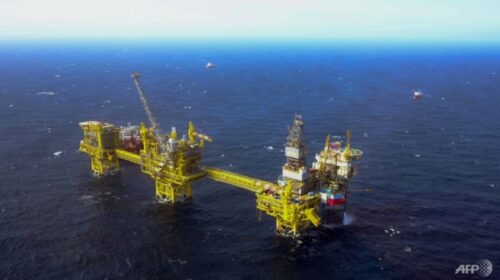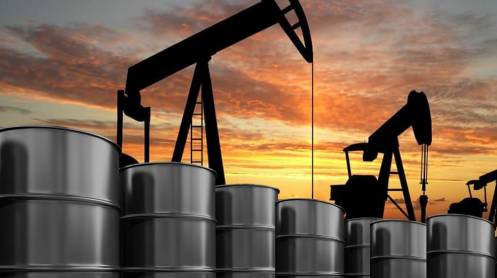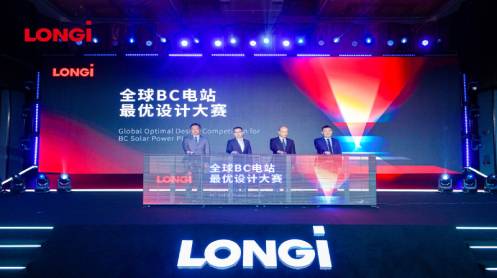he South American country of Guyana is undergoing rapid development as a result of a string of offshore oil discoveries by ExxonMobil, NYSE:XOM). Announcements by the company since 2017 have added more than 8 bn barrels of reserves, spread over 18 discoveries in the deep waters of that country. Thus far one FPSO has been ordered to serve the Liza Phase-1 subsea development with four separate drill centers and up to 30 wells. At peak production, Liza Phase-1 will pump out 220K BOEPD.
XOM
Liza Phase-2 is on schedule to produce another 220K BOEPD, starting in mid-2022, from as many as 30 subsea wells. Payara a similar project to the other two, will bring another 220K BOEPD to market in 2024, from 45 subsea wells. Other projects are in various stages of pre-FID engineering. All told Guyana could be exporting nearly 700K BOEPD as the decade turns.
With discoveries like this Guyana has rightly captured the world’s attention and helped to drive ExxonMobil’s stock to a recent multi-year high. Numerous other operators have come behind to probe the ocean’s depth for riches offshore Guyana and in neighboring countries.
For example, a little farther down the South American continent, sandwiched between Guyana and French Guiana, lies the Republic of Suriname. Since early 2020, the Suriname buzz has been building as APA Corp, (NYSE:APA) and TotalEnergies, (NYSE:TTE) have hit a string of 5-consecutive discoveries in Block 58. The excitement in this country is a little more muted than that in Guyana as yet because thus far no big projects have met FID. That could be changing later this year with positive news from APA and TTE.
What led to these discoveries?
A World Oil article notes that in the mid-2010’s Geologists began to suspect that drilling along what is called the African Transform Margin would lead to exploration successes. Oil operator Tullow, found success offshore Ghana with the discovery of its Ten complex. This spurred a rush of leasing from Cote d’Ivore to Sierra Leone, but results were mixed and new drilling trailed off in West Africa.
Not long after many of the same international oil companies that had proved successful in West Africa and along the African Transform Margin were determined to apply those concepts to the South American Equatorial Margin (SAEM). As a result, companies licensed deepwater offshore blocks in Guyana, Suriname, and French Guiana by early 2010. Tullow found success with pay in 2000 meters of water, offshore French Guiana in 2011, but was declared non-commercial after three other dry holes. Then things largely fell off until XOM arrived offshore Guyana in 2015. Which changed everything.
APA Corp in Suriname
APA Corp and partner/operator TotalEnergies are moving with all deliberate speed toward an FID on their first development offshore Suriname, following the announcements of a number of discoveries since late-2019. A total of 5-deep water discoveries have been announced in the last two and half years.
Recently they announced a flow test at Sapakara South of ~4,800 BOPD. This was on a choke-they don’t reveal the size, but the absolute open-flow rate is probably at least triple this figure. For those who are interested, flow tests are where petroleum engineers come to work. They are assessing a number of criteria, but at the heart of it they are calculating the size (in barrels) of the reservoir, and the rate at which it can be produced. Regardless, it doesn’t take too many 15,000 BOPD wells before the excitement begins to build. Some of this excitement overflowed into the company’s First Quarter conference call. John Christman, CEO commented in regard to an analyst question-
“With further information and analysis, we are increasing our estimate of the connected resource in place, in a single zone at Sapakara South 1, to more than 400 million barrels. We look forward to additional appraisals that should further increase the estimated resource in place at Sapakara South.”
Source
For reference Shell’s, (NYSE:SHEL) most recent major project in the GoM, Vito, included putting in a floating production hub to extract 300 mm BOOIP. It takes more to turn the crank in Suriname, but as you can see we are at 400 mm BOOIP for Sapakara South, and in the comment above, Christman specifically led us to believe that number is going higher.
It’s been a while since I read a conference call transcript where the analysts were, trying as hard to tease information out of management, about the almost dead certain FID on the Suriname hub.
Analyst fervor for details about the Sapakara South test was demonstrated by Doug Leggate, an analyst with BOA who queried, “I wonder if you could give us a more fulsome update as to whether you feel like you are still making progress towards a development and FID this year.”
John Christman, CEO of APA commented, “We prioritized a list of both exploration and appraisal targets that we need to drill. Obviously, the appraisal targets are helping us find connected volumes, which are critical to scope and scale and the exploration targets that are sizable, we also need to drill to make sure you would get the scope and scale right of that potential first FID. So things are on track.”
Company filings
That was about as effusive as Christman got in spite of repeated attempts by a slew of analysts. You can’t blame the analysts for probing. Once that almost certain FID has been announced, shares of APA are likely to go higher.
If you look below, you can see why I am so confident that APA will announce an FID. You don’t drill this many wells if you aren’t getting prospective Drill Stem Tests-DST’s. Apache had a bad drill stem test-DST, in 2017 offshore Suriname in Block 53, and took over two years to analyze the geophysical data before choosing to move the drilling focus to the Maka #1 in Block 58. Seven successes, one after another have been the result. You don’t drill seven subsea high pressure, high temperature-HPHT wells in a field, to then declare it non-commercial. You don’t do a second in-flow test (Krabdagu) if you aren’t establishing the connectedness of the reservoir to earlier discoveries. These tests can cost millions of dollars worth of rig time and associated services, and are done only after careful consideration.
The line of discoveries follows the trend established by ExxonMobil in their-so far 8 bn barrel cumulative Stabroek discoveries. Geologists refer to a trend like this as a channel. So far XOM has announced 18 consecutive discoveries in this block, offshore Guyana, and changed the course of that formerly-sleepy South American nation. The same thing is getting ready to happen in Suriname.
It seems clear to me that at some point soon, APA and TotalEnergies will be announcing a billion barrel+ find and Vito style floating production hub with Floating Production, Storage and Offloading-FPSO offtake. It should also be noted that TTE (the operator of Block-58) has awarded a pre-FEED FPSO contract to Yinson. Another promising indicator for FID.
About the Apache and TTE partnership and the impact on Suriname
When the drilling began on the first well that would lead to the string of discoveries, there were concerns about a company the size of Apache being able to see it through financially in the case of a discovery. The announcement of Apache’s (now APA Corp.) partnership with Total to develop Suriname Production Sharing Contract-PSC, has eased concerns about spending on a large project. The French company has a long history of bringing in MEGA projects successfully. Total became the operator of Block 58 and will carry 87.5% of the first $10 billion in gross spending, 75% of the next $5 billion, and 62.5% above that, along with other payments and royalties. Around $200 million is earmarked for exploration and appraisal in Suriname in Apache’s 2022 budget. While Suriname is expected to make a more material contribution to Apache over the medium term, first oil is not expected at least until 2025 according to the operator, and drilling remains in the appraisal phase for now, which limits its near-term credit impact.
The success of APA and Total in Suriname’s waters has brought in other operators like Chevron, (NYSE:CVX), ExxonMobil, (NYSE:XOM), Hess Corp, (NYSE:HES). CVX signed a PSC for Block-7 with the government of Suriname as noted in a recent Reuters article.
Suriname is just beginning to be transformed by the prospect of wealth. APA Corp for its part has formed a new corporation, APA Corporation Suriname to manage its assets in the country. Managing this resource to the benefit of its citizens is definitely top of mind for Suriname’s leaders. President of Suriname, Chandrikapersad Santokhi noted in a recent article, carried in Kaietur News Online, “We have the same goal and commitment to our current and certainly, our future generations,” President Santokhi noted. But in addition to being able to provide for generations to come, the President urged too that the two countries be responsible in the development of the oil resources in an “environmentally friendly and sound manner”
There is no question that the impending developments off Suriname’s coast are transformative for the country and the companies making it happen.
Your takeaway
APA Corp is trading at 3X operating cash flow-OCF at its current price. On a Price to Flowing barrels, it’s at $47 per barrel, so still in a very attractive range to Brent. A PV-10 calculation values the company at ~$18 bn, a little less than its current EV. Let’s remember that the coming reserves bump from Suriname is not factored to this estimate!
What might Suriname add to the balance sheet? With 50% going to APA, let’s assume they announce a billion barrels of reserves at some point. Simple math suggests the shares should rerate to the middle $60’s with a 50% increase in reserves. Analysts are thinking along these lines with a median PT of $54, and an outlier of $90.
I think whoever has made the $90 estimate is going off the extremely low cash flow multiple for the stock, and the buyback implications. With the share count being reduced to 308 mm almost certainly this year that gets you to its current price. The 290 mm guesstimate would take it toward $52. Now let’s increase the multiple to 4X OCF. That gets it toward $77 with 308 mm shares outstanding and $82 with 290 mm outstanding. Getting into the analyst range with a modest bump in the OCF multiple is not wishful thinking for a company with the prospects of APA.
One final guestimate here. What would another 100K BOPD do to cash flow a few years hence? At current Brent prices, it would take APA toward another $3.0 bn in cash flow, and drive the stock price over $100 per share at a 4X multiple. In recent trading shares of APA have reached the low $50’s, logging a 40% rally in just under a month.
I think APA presents a solid case for investors at current prices with a realistic prospect of a 50% return in one year, and a potential doubling in the event Suriname reaches FID. The risk of that not happening can’t be completely discounted, and shares would take a hit in that event.





